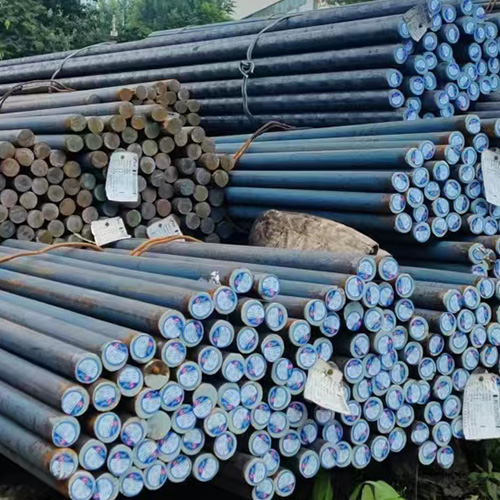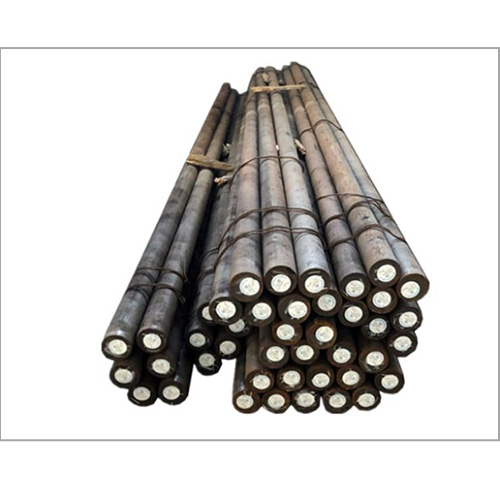Introduction

1018 annealed steel is a widely used low-carbon steel known for its excellent balance of properties, including machinability, weldability, and formability. This versatile material finds applications in various industries, from automotive to construction. In this blog post, we will delve deeper into the characteristics, applications, and processing techniques of 1018 annealed steel.
Understanding the Properties of 1018 Annealed Steel
Chemical Composition and Mechanical Properties 1018 steel is a plain carbon steel, primarily composed of iron, carbon, and manganese. The “1018” designation indicates its chemical composition: the first two digits represent the carbon content (0.18% carbon), and the last two digits represent the manganese content (0.80% manganese).
Key properties of 1018 annealed steel include:
- High Machinability: The soft and ductile nature of annealed 1018 steel makes it highly machinable, allowing for efficient cutting and shaping operations.
- Good Weldability: It can be easily welded using various techniques, such as arc welding and gas welding, producing strong and reliable joints.
- Excellent Formability: 1018 annealed steel exhibits good formability, making it suitable for bending, drawing, and stamping processes.
- Moderate Strength: While not as strong as high-carbon steels, it offers sufficient strength for many applications.
- Good Toughness: This steel exhibits good toughness, making it resistant to impact and fracture.
Applications of 1018 Annealed Steel
The versatility of 1018 annealed steel has led to its widespread use in numerous industries:
Automotive Industry:
- Chassis Components: Frame rails, crossmembers, and suspension components are often made from 1018 steel due to its good strength-to-weight ratio and weldability.
- Engine Components: Camshafts, connecting rods, and other engine components can be manufactured from 1018 steel, especially for low-stress applications.
- Body Panels: While not as common as higher-strength steels, 1018 steel can be used for certain body panels, especially in older vehicles.
Construction Industry:
- Structural Components: Beams, columns, and other structural elements can be fabricated from 1018 steel, particularly in low-stress applications.
- Hardware and Fasteners: Bolts, nuts, screws, and other fasteners are often made from 1018 steel due to its good machinability and strength.
- Agricultural Equipment: Plows, harrows, and other agricultural implements can be manufactured from 1018 steel, as it offers a good balance of strength and durability.
Machinery Industry:
- Machine Parts: Gears, pulleys, and other machine components can be produced from 1018 steel, especially for low-stress applications.
- Tooling and Jigs: 1018 steel is often used to make tooling and jigs due to its good machinability and wear resistance.
The Annealing Process
Annealing is a heat treatment process that involves heating the steel to a specific temperature, holding it at that temperature for a certain period, and then slowly cooling it. This process significantly improves the mechanical properties of 1018 steel:
- Increased Ductility: Annealing reduces the hardness and increases the ductility of the steel, making it more formable.
- Improved Machinability: The softer microstructure resulting from annealing enhances the machinability of the steel, reducing tool wear and improving cutting efficiency.
- Stress Relief: Annealing relieves internal stresses that may have developed during previous manufacturing processes, such as cold working or welding.
Comparing 1018 Annealed Steel with Other Steels

| Property | 1018 Annealed Steel | AISI 1020 | AISI 1045 |
|---|---|---|---|
| Carbon content (%) | 0.18 | 0.20 | 0.45 |
| Manganese content (%) | 0.80 | 0.80 | 0.65 |
| Strength | Moderate | Higher than 1018 | Much higher than 1018 |
| Ductility | Good | Good | Lower than 1018 |
| Machinability | Excellent | Good | Poor |
| Weldability | Excellent | Good | Good |
Conclusion
1018 annealed steel is a versatile and cost-effective material that offers a balance of properties suitable for a wide range of applications. Its excellent machinability, good weldability, and moderate strength make it a popular choice for various industries. By understanding the properties and applications of 1018 annealed steel, engineers and manufacturers can make informed decisions to optimize their designs and production processes.
FAQ
What is the difference between 1018 and 1020 steel?
While both are low-carbon steels, 1020 steel has a slightly higher carbon content (0.20%) compared to 1018 steel (0.18%). This higher carbon content in 1020 steel results in slightly increased strength and hardness, but it also reduces its machinability and formability.
Can 1018 steel be hardened?
Yes, 1018 steel can be hardened through heat treatment processes like quenching and tempering. However, the resulting hardness will be lower compared to higher-carbon steels.
What is the best welding process for 1018 steel?
1018 steel is highly weldable and can be welded using various processes, including shielded metal arc welding (SMAW), gas metal arc welding (GMAW), and gas tungsten arc welding (GTAW). The choice of welding process depends on factors such as the thickness of the material, the desired joint quality, and the available equipment.
How do I select the right heat treatment for 1018 steel?
The appropriate heat treatment for 1018 steel depends on the desired properties. Annealing is used to improve ductility and machinability, while normalizing is used to improve strength and toughness. Quenching and tempering can be used to achieve higher hardness and strength, but it may reduce ductility.
